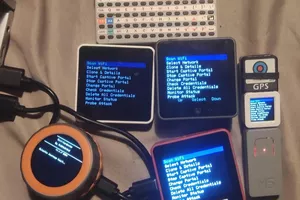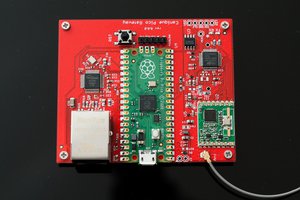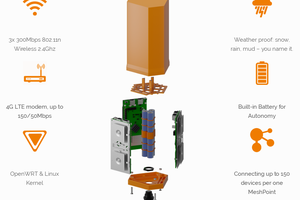GET ONE HERE: http://kck.st/2Mo4iym
DISCORD GROUP => https://discord.gg/HfJhd2S
Before we get into the project's details, I would like to invite you to join our Discord group where we chat about hacking, electronics, IoT, and much more => https://discord.gg/HfJhd2S
What you can do with it (just some ideas....)
Guests at home: Your friends are visiting you at home? No problem, just setup your Kortex Xtend Lite as a free open WiFi access point and let your friends connect without them knowing your WiFi password.
Deploy a WiFi drone: You can take your WiFi connectivity to the air by simply attaching your Kortex Xtend Lite to a drone. You can use it for allowing IoT sensors located at a high altitude to connect to the internet in order to upload the recorded data to a server (e.g: temperature, humidity, pressure).

Scan AP's with a drone: You can also use it to scan your neighborhood access points by simply flying your drone near the place you want to get info from. Imagine you want to hack your angry neighbor WiFi (just kidding... don't do it), but your computer doesn't detect the AP due to the large distance between your home and the AP you want to scan. The solution would be flying your drone with the attached repeater, and from your computer (already connected to the repeater attached to the drone) running "snet" command in order to get the access point name, ip address and mac address.

Your drone should be on air at least 15min. If the drone moves to too far from the AP, you could fail at sending commands, and also while receiving data. Remember that this repeater only provides information about the network (and of course other great features), and it cannot do things a computer does, so when I say hacking, that means from your computer, the repeater is only a little "spy"
Protect your connected devices: The advantage of using this NAT repeater is the IP masquerading feature that protects your devices (computer, IoT sensors, etc...) identity by implementing a network address translation procedure that gives your devices a unique private IP address hidden behind a single public IP address (repeater IP address), so you can keep a bunch of devices hidden from hackers.
Deploy aerial WiFi zones with drones (mesh) *not tested yet: Do you want to provide WiFi to a large area? That's possible if you can get a bunch of drones and attach to them another bunch of Kortex Xtend Lite repeaters set to "mesh" mode. If you fly the drones, automatically the repeaters will form a mesh network and you'll be able to provide WiFi connectivity to your clients (IoT sensors, neighbours, etc....). Remember that many factors like trees, houses, weather and distance can cause WiFi bandwidth to go down, and eventually, if you increase the number of repeaters (up to 8) the available bandwidth will almost disappear, so please keep that in mind :)
Capture data from connected clients: In order of being able to capture connected clients data, firstly you must set the repeater as an open WiFi access point (see *commands list, documentation and tutorials - up)
Once you make sure someone is connected to your Kortex Xtend Lite (by running "show" command) from your console or Telnet terminal start a monitor service by running "monitor on [portno]"
This service mirrors the traffic of the internal network in PCAP format into a TCP stream. With a "netcat [external_ip_of_the_repeater] [portno] | sudo wireshark -k -S -i -" from a computer in the external network you can now observe the traffic in the internal network in real time. Use this to observe with which internet sites your clients are communicating.
Technical Data
On the bottom side, there’s a reset button for restarting the ESP8266, and an IPEX cable that connects the SMA connector to the ESP8266 in order to maximize transmission range.

Comes fully assembled and tested, with the firmware uploaded...
Read more » Amine Mehdi Mansouri
Amine Mehdi Mansouri




 worsthorse
worsthorse
 7h30th3r0n3
7h30th3r0n3
 canique
canique
 Valent Turkovic
Valent Turkovic
This project seems to have a larger feature set in a smaller package:
https://github.com/martin-ger/esp_wifi_repeater